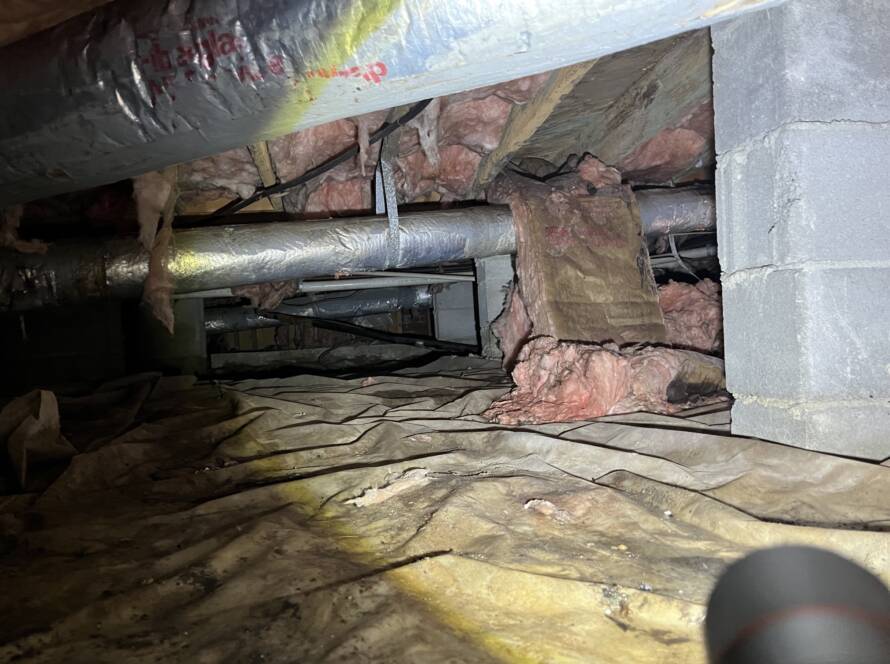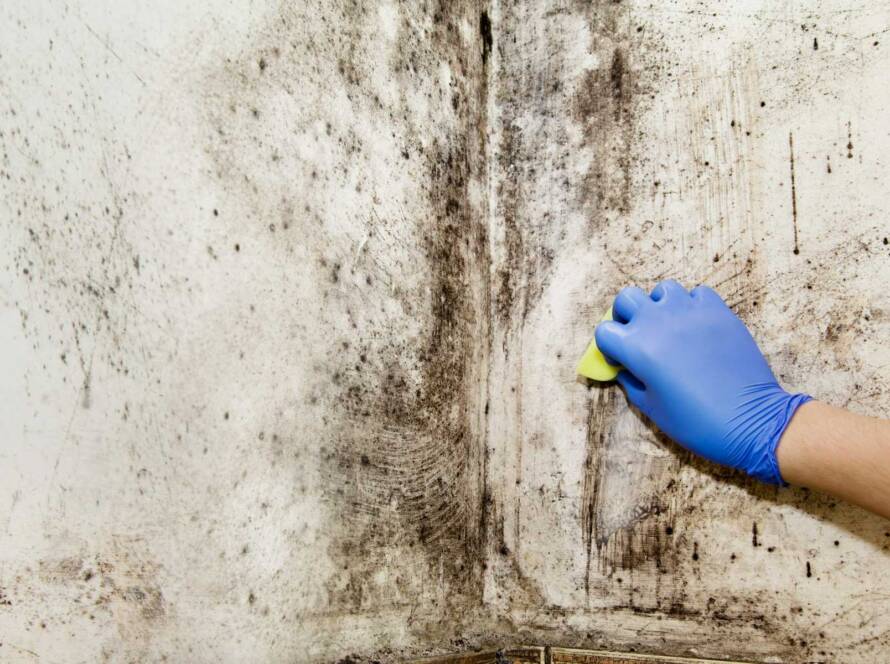Water damage is a homeowner’s worst nightmare—especially when it impacts your floors. Whether it’s a burst pipe in the middle of the night, a leaking appliance, storm-related flooding, or just a slow, undetected drip under the surface, the effects can be devastating. Warped planks, discolored boards, musty odors, and compromised subfloors are just the beginning. Left untreated, water damaged floors can lead to long-term structural problems and costly repairs.
At BioSweep, we’ve helped countless homeowners and business owners across Charleston and the Lowcountry recover from water damage with confidence and peace of mind. With more than a decade of hands-on experience, industry certifications, and a commitment to service excellence, we know exactly what it takes to bring your property back to life.
In this expert guide, we’ll walk you through what happens when your floors get water damaged, how to recognize the early warning signs, and what steps BioSweep takes to assess, dry, and restore your floors to their original condition—or better.
What Happens When Floors Get Water Damaged?
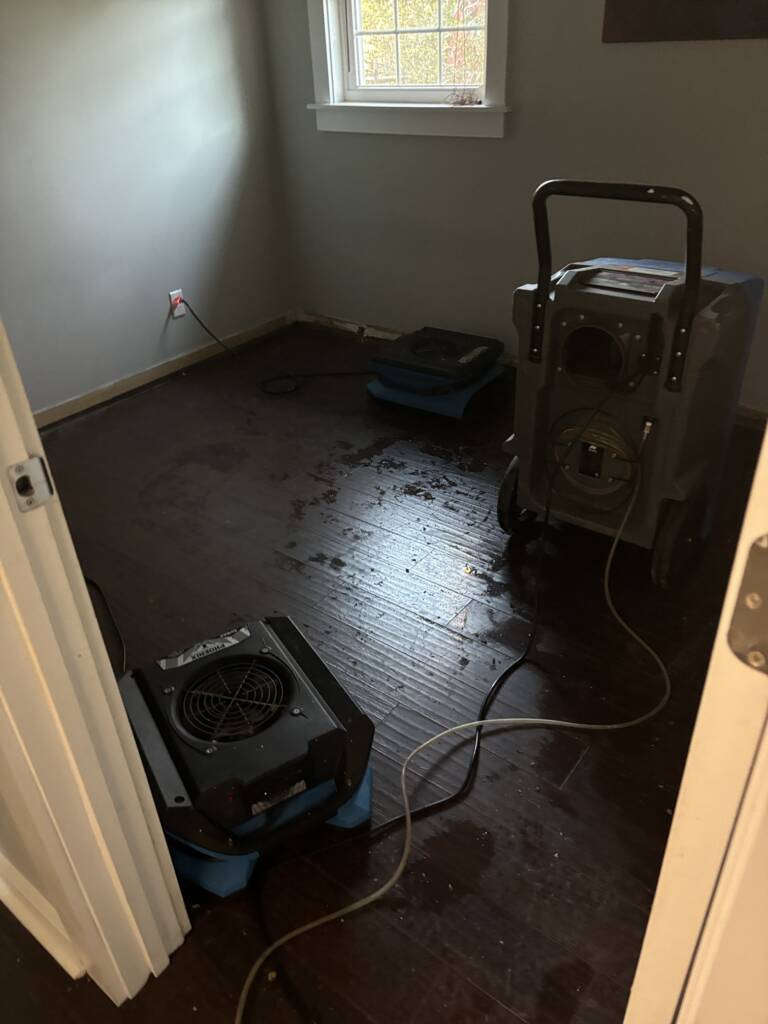
Wood and water simply don’t mix. Even engineered or treated wood products can only withstand so much moisture before showing signs of deterioration. That’s because wood is naturally porous and absorbent. When water seeps into your floors—whether from above or below—it can trigger a chain reaction of damage that quickly worsens over time.
Common consequences of water exposure include:
- Cupping: The edges of the floorboards rise higher than the center, creating a concave appearance.
- Warping or Buckling: Boards twist or lift off the subfloor, disrupting the smooth surface and integrity of your floor.
- Discoloration and Staining: Water can darken wood or leave behind white spots or gray blotches depending on the severity and type of exposure.
- Peeling Finish: Sealed floors may start to bubble, flake, or peel as the protective layer fails under moisture stress.
- Mold and Mildew Growth: Damp environments are a breeding ground for microbial activity that threatens your health and home.
- Structural Damage: If water reaches the subfloor, joists, or framing, the resulting rot can weaken the structure and require extensive repairs.
The critical factor in minimizing damage? Time. The longer water sits, the deeper it penetrates, and the more expensive the restoration becomes.
Process for Water Damaged Floor Restoration
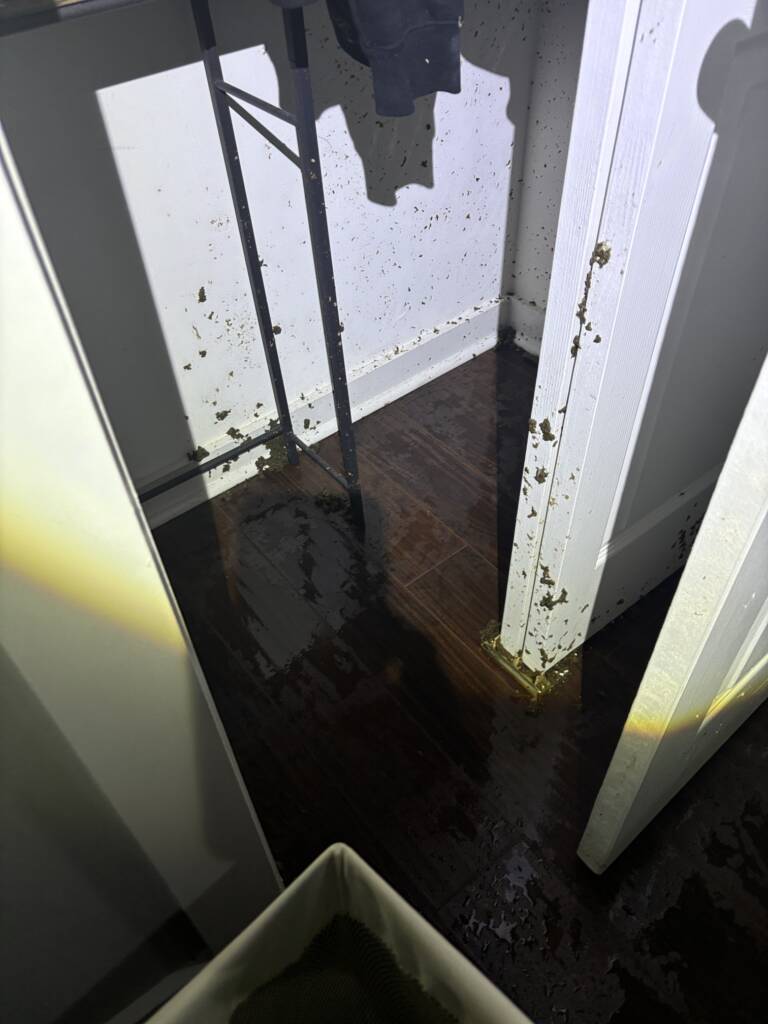
At BioSweep, we don’t take shortcuts when it comes to water damage. Our IICRC-certified restoration professionals follow a detailed, step-by-step protocol to identify all sources of damage, safely dry out your space, and restore your floors with care and precision.
Step 1: Comprehensive Assessment
Our process begins with a detailed inspection. Using professional-grade moisture meters, hygrometers, and infrared cameras, we detect water hidden beneath floorboards and inside walls. It’s not just about what you can see—it’s about what’s lurking out of sight.
We’ll also:
- Identify the water source (leak, pipe burst, stormwater, etc.)
Assess the extent of moisture infiltration - Document the damage for insurance purposes
- Provide a transparent, written estimate
No guesswork. No surprises. Just facts and a clear plan.
Step 2: Rapid Water Extraction and Drying
Once the assessment is complete, our remediation team gets to work removing all standing water. Using industrial-strength water extractors and wet vacuums, we clear visible moisture from your floors and subfloors.
Then, we deploy a carefully calibrated combination of:
- Air Movers: High-velocity fans that circulate dry air to speed up evaporation
- Dehumidifiers: Powerful systems that remove excess humidity from the air
We also sanitize the affected areas to prevent mold and mildew from developing and apply antimicrobial treatments as needed.
Step 3: Floor Restoration and Repair
Once your space is completely dry and moisture readings return to safe levels, we begin the restoration phase. Depending on the damage, this may include:
- Replacing warped or rotted boards
- Sanding and refinishing affected areas
- Staining new wood to match your existing floor
- Repairing or replacing damaged subfloor material
- Applying fresh sealant for long-term protection
Our mission is to restore—not just replace—whenever possible. We take pride in high-quality craftsmanship and seamless repairs that preserve the beauty and integrity of your home.
We also work directly with your insurance company to streamline the claims process, minimizing paperwork and delays. And most importantly, we never hit you with hidden fees or surprise charges.
Signs You Might Have Water Damaged Floors
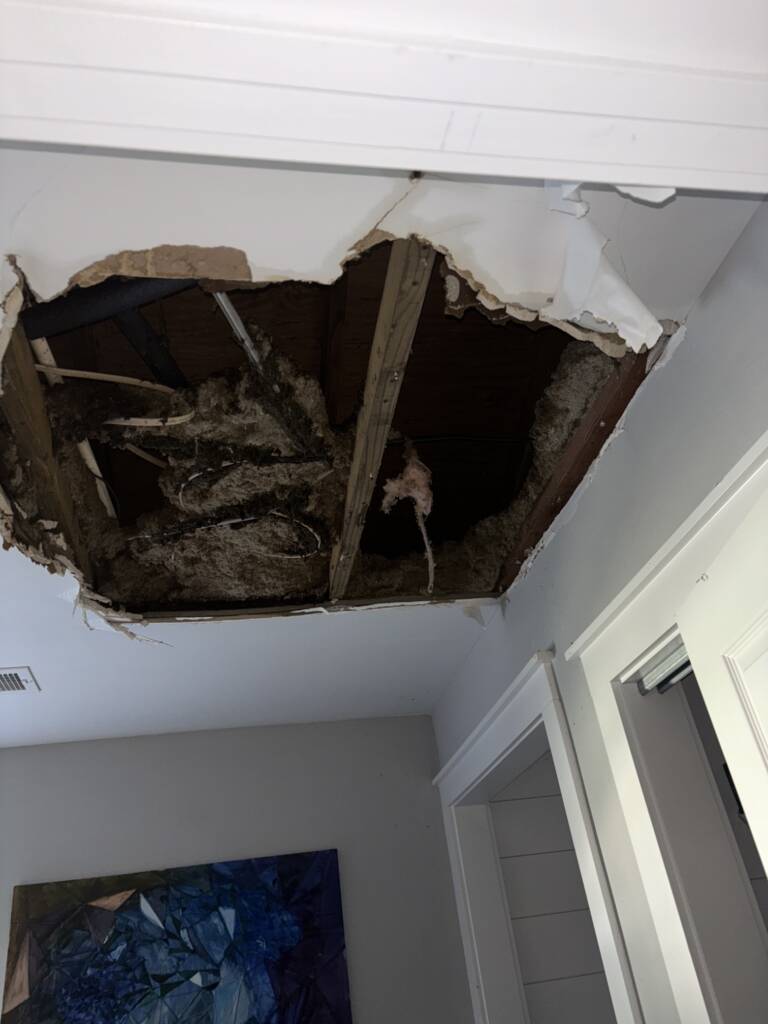
Water damage doesn’t always announce itself with a flood. Often, the early signs are subtle—until it’s too late. Knowing what to look for can help you take action before your floors are beyond saving.
Warning signs include:
- Unusual discoloration or dark stains
- A musty or earthy smell that won’t go away
- Boards that feel soft, spongy, or springy underfoot
- Peeling or bubbling finish
- Creaking, popping, or squeaking noises
- Crowning (when the center of the board is higher than the edges)
If you notice any of these symptoms—especially after a plumbing issue or severe weather—call BioSweep right away for an inspection. The faster we respond, the better chance we have to preserve your flooring and prevent more costly repairs down the line.
Can Water Damaged Wood Floors Be Saved?
This is one of the most common questions we get—and the answer depends on how quickly you act.
- Minor exposure (like a spill or short-term leak): Floors can often be saved with fast drying and light refinishing.
- Moderate exposure (12–24 hours): Some boards may need to be replaced, especially if water has reached the subfloor.
- Severe exposure (more than 24 hours or visible mold): Floors will likely require partial or full replacement and deeper structural evaluation.
At BioSweep, we don’t believe in unnecessary demolition. We evaluate each case thoroughly and look for ways to restore first, replace only when necessary.
Why Homeowners Trust BioSweep
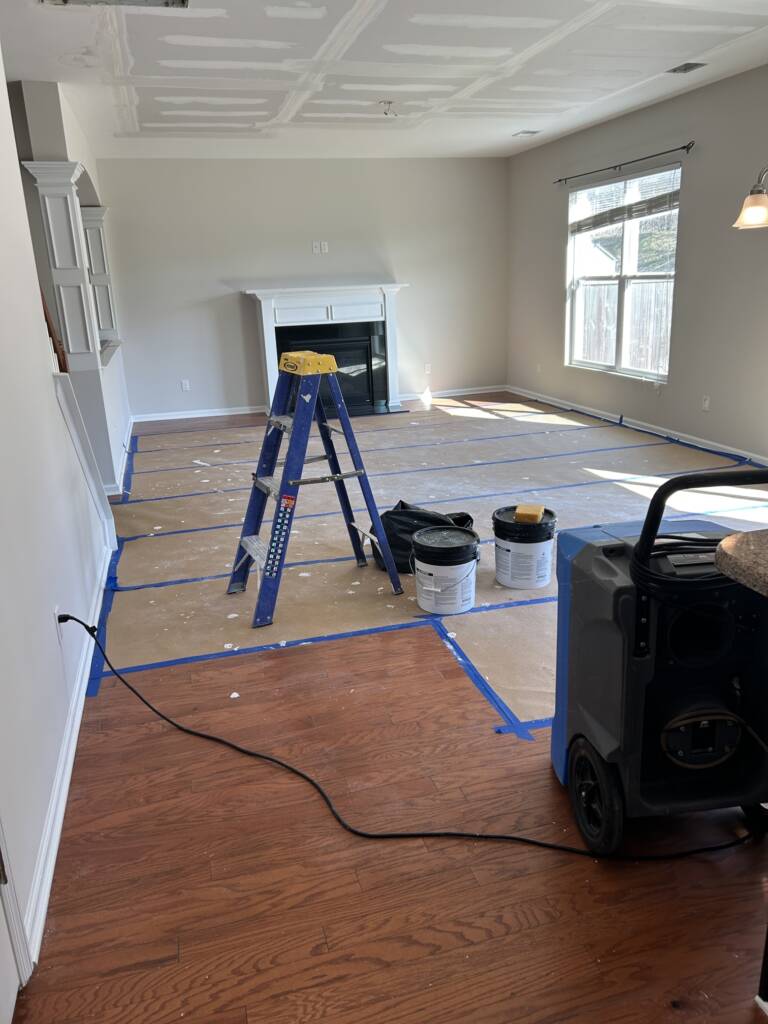
Choosing the right restoration company makes all the difference. When you call BioSweep, you’re not just getting a service—you’re gaining a team of committed professionals who treat your home like their own.
Here’s what sets us apart:
✅ Over 10 Years of Local Experience
We’ve helped hundreds of Charleston residents recover from water damage, and we understand the unique challenges of our Lowcountry climate.
✅ Veteran-Owned and Operated
We bring the discipline, integrity, and attention to detail you’d expect from a military background.
✅ IICRC-Certified Technicians
Our team meets the highest standards in the industry for water damage restoration and mold remediation.
✅ Fully Licensed and Insured
You’re protected, and so are we.
✅ 24/7 Emergency Response
Disasters don’t wait—and neither do we.
✅ No Hidden Fees, Ever
We offer fair, upfront pricing with detailed estimates approved by insurance.
✅ 100% Satisfaction Guarantee
We don’t stop until the job is done—and you’re happy with the results.
Don’t Wait—Get Expert Help from BioSweep Today
When it comes to water-damaged floors, time is your most valuable asset. The sooner you call BioSweep, the greater your chances of salvaging your flooring, avoiding mold, and restoring your space to its original beauty.
Whether it’s hardwood, engineered wood, laminate, or subflooring—we’ve seen it all, and we know how to fix it.
Let BioSweep help you recover from water damage—quickly, thoroughly, and professionally.

